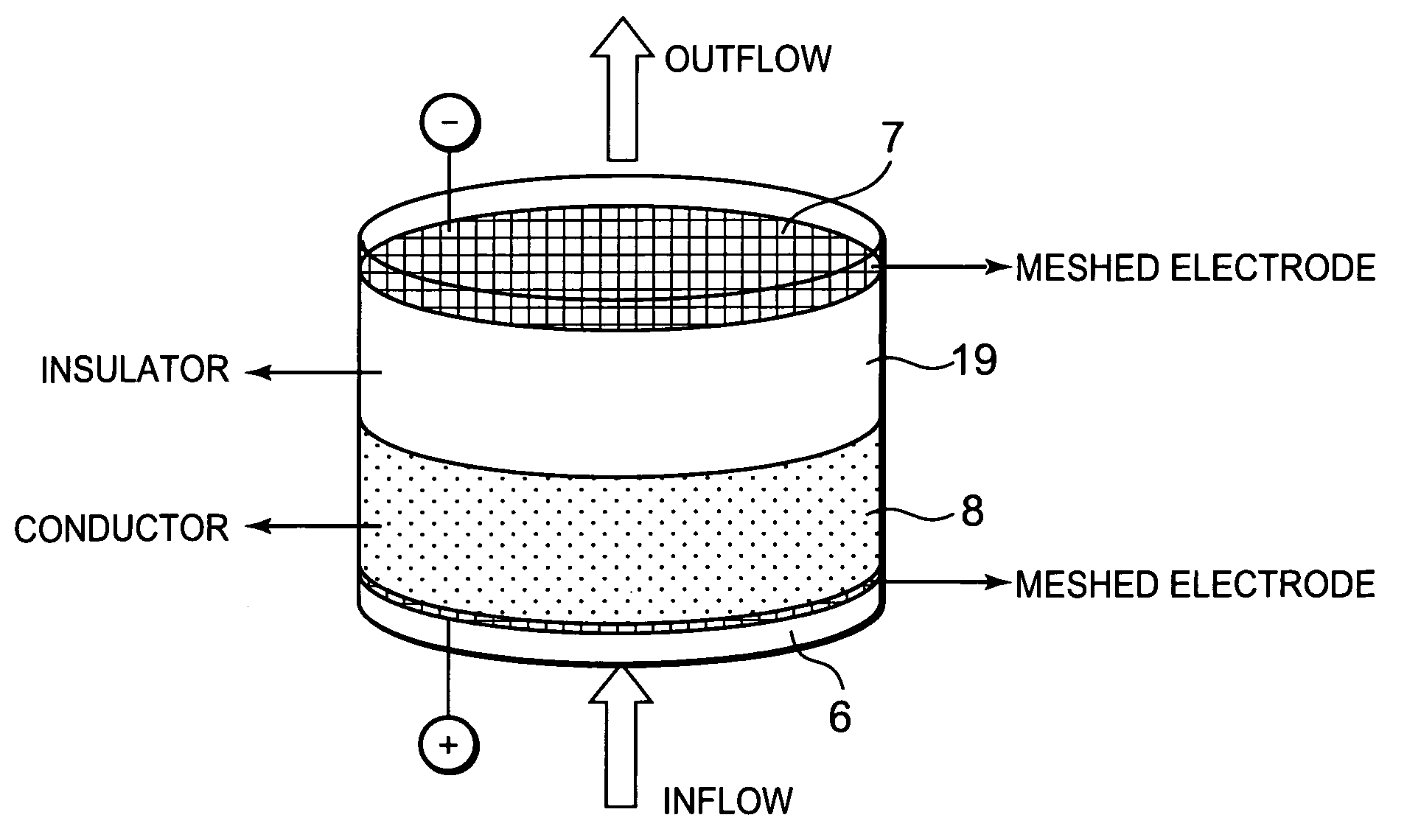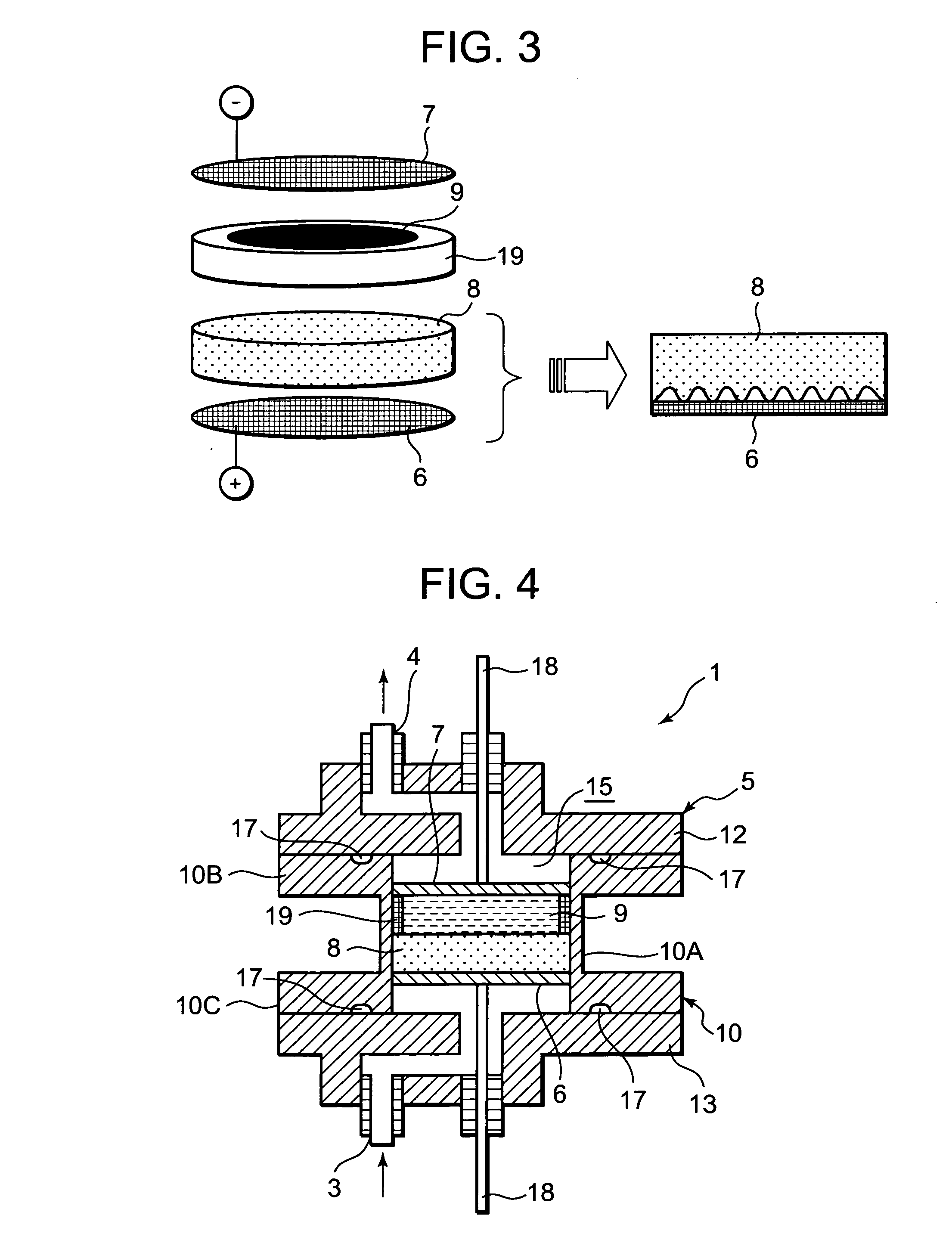Water treatment device
- Summary
- Abstract
- Description
- Claims
- Application Information
AI Technical Summary
Benefits of technology
Problems solved by technology
Method used
Image
Examples
embodiment 1
[0033]FIG. 1 is a schematic diagram showing a system S including a water treatment device according to one embodiment to which the present invention has been applied. The system S of the present embodiment is a water treatment system in which water (for-treatment water) such as rain water, ground water, water for beverage use, bath water or hot spring water received in a raw solution tank 20 is treated by a water treatment device 1 according to the present invention, and then received in a treated solution tank 30. The system is applied to, for example, a beverage manufacturing device or the like which treats the for-treatment water to form the water for beverage use. Then, the water treatment device 1 of the present invention is installed along the channel of the for-treatment water flowing from the raw solution tank 20 to the treated solution tank 30.
[0034]That is, the system S of the present embodiment is constituted by successively connecting the raw solution tank 20, the water ...
embodiment 2
[0093]It is to be noted that in Embodiment 1 described above, the water treatment device 1 to which the present invention is applied is disposed in the system S shown in FIG. 1 in which the for-treatment water received in the raw solution tank 20 is treated and received in the treated solution tank 30, but the present invention is not limited to this embodiment. The water treatment device 1 may be used in another system. Here, in the present embodiment, another embodiment will be described in a case where the water treatment device 1 to which the present invention is applied is disposed in the other system.
[0094]FIG. 11 is a diagram schematically showing the system of the other embodiment provided with the water treatment device 1 to which the present invention is applied. This system is an apparatus for removing or decomposing microorganisms and fine matters included in for-treatment water such as water (hot water) for use in public bath or hot spring. It is to be noted that in FIG...
PUM
| Property | Measurement | Unit |
|---|---|---|
| Fraction | aaaaa | aaaaa |
| Force | aaaaa | aaaaa |
| Electrical conductor | aaaaa | aaaaa |
Abstract
Description
Claims
Application Information
 Login to View More
Login to View More - R&D
- Intellectual Property
- Life Sciences
- Materials
- Tech Scout
- Unparalleled Data Quality
- Higher Quality Content
- 60% Fewer Hallucinations
Browse by: Latest US Patents, China's latest patents, Technical Efficacy Thesaurus, Application Domain, Technology Topic, Popular Technical Reports.
© 2025 PatSnap. All rights reserved.Legal|Privacy policy|Modern Slavery Act Transparency Statement|Sitemap|About US| Contact US: help@patsnap.com



